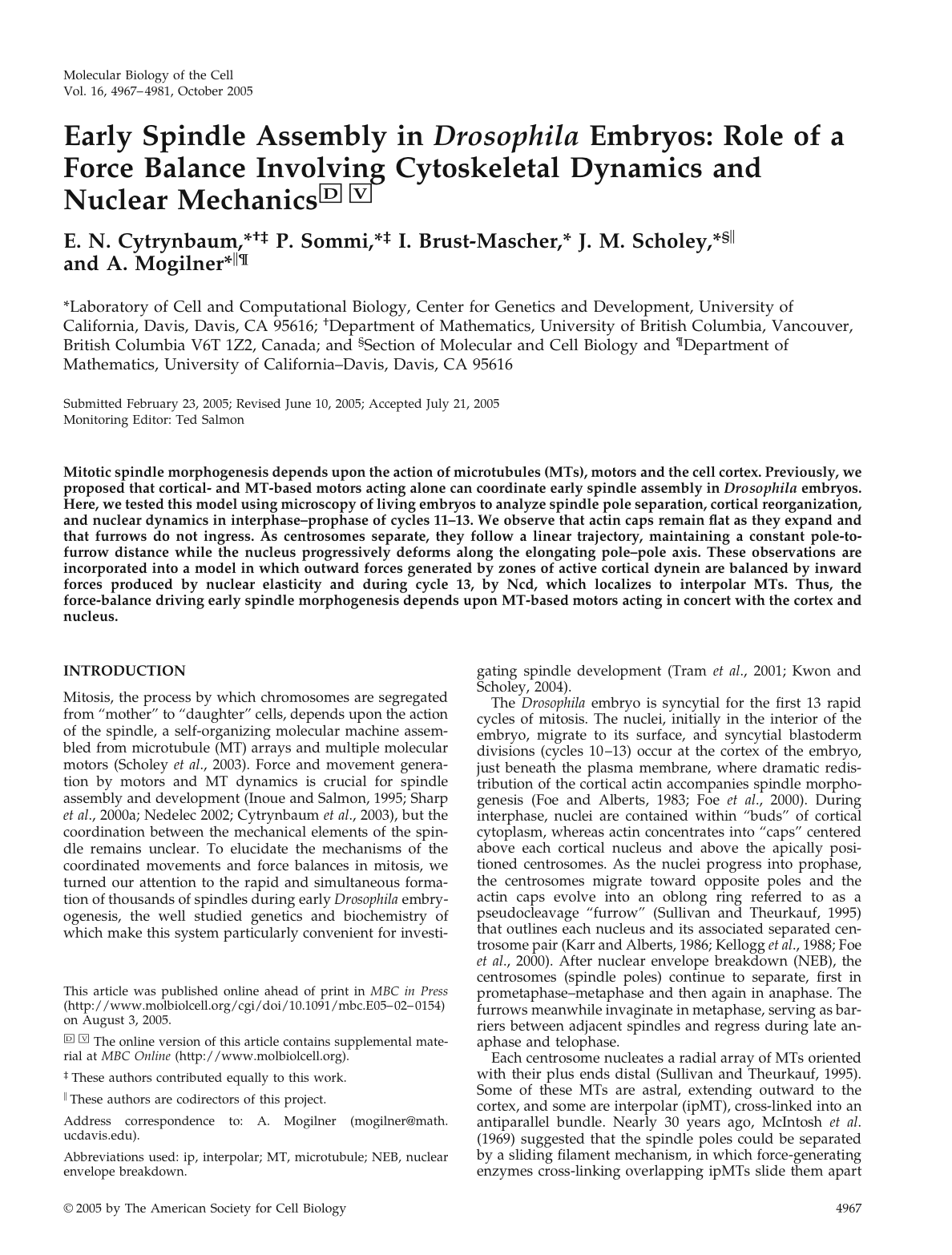Publications
| Abstract | Mitotic spindle morphogenesis depends upon the action of microtubules (MTs), motors and the cell cortex. Previously, we proposed that cortical- and MT-based motors acting alone can coordinate early spindle assembly in Drosophila embryos. Here, we tested this model using microscopy of living embryos to analyze spindle pole separation, cortical reorganization, and nuclear dynamics in interphase-prophase of cycles 11-13. We observe that actin caps remain flat as they expand and that furrows do not ingress. As centrosomes separate, they follow a linear trajectory, maintaining a constant pole-to-furrow distance while the nucleus progressively deforms along the elongating pole-pole axis. These observations are incorporated into a model in which outward forces generated by zones of active cortical dynein are balanced by inward forces produced by nuclear elasticity and during cycle 13, by Ncd, which localizes to interpolar MTs. Thus, the force-balance driving early spindle morphogenesis depends upon MT-based motors acting in concert with the cortex and nucleus. |
|---|---|
| A link to the paper |
 Mol Biol Cell, 16(10):4967-4981, 2005. |